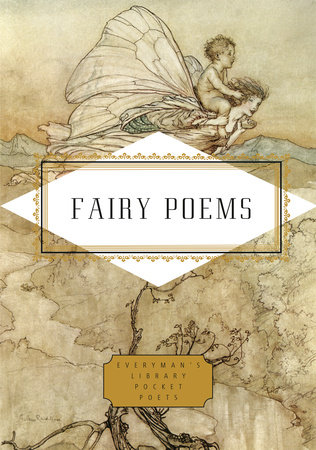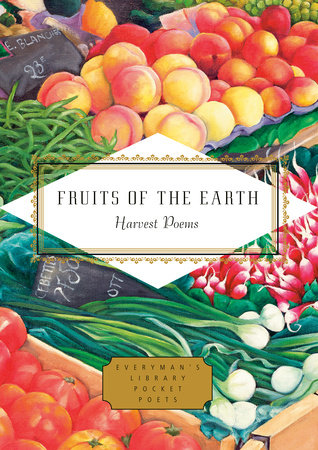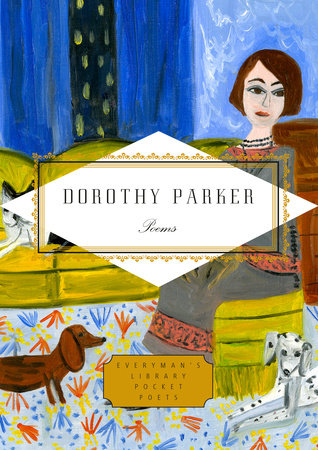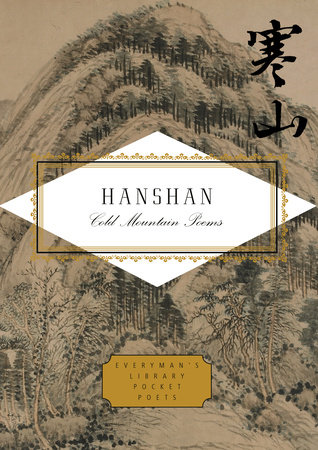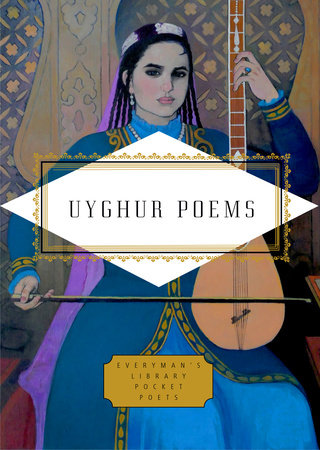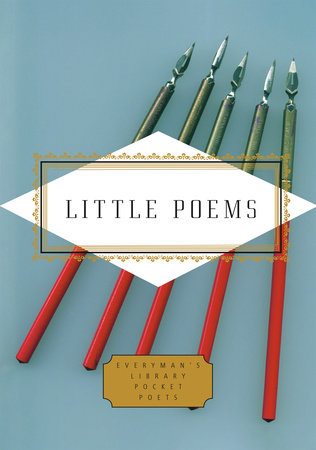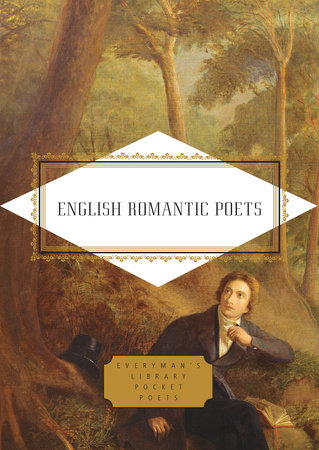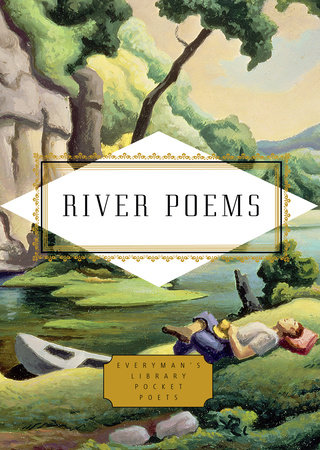Excerpt
Fairy Poems
Foreword
With deep roots in pagan traditions and religions, fairies are ubiquitous in mythology and folklore in all periods of recorded history. Their wings’ breadth spans continents, and anthropologists, ethnographers, and folklorists have traced belief in fairies worldwide. The origin stories of fairies are diverse. In Irish tradition, fairies were said to have descended from the Tuatha Dé Danann, a superior race of beings and rulers. Others believed that fairies were fallen angels, of neither heaven nor hell. In the seventeenth century, Robert Kirk, one of the first Gaelic folklorists, wrote: “Siths, or Fairies, they call Sluagh Maith, or the Goodpeople . . . are said to be of a middle nature betwixt man and angel, as were demons thought to be of old.” To still others, fairies were the descendants of monstrous Pre-Christian beings or of Cain. They have alternatively been characterized as restless spirits of the dead. While their origin stories differ, certain attributes of fairies appear in a number of cultures, including superior strength, uncanny intelligence, invisibility, supernatural gifts, and otherworldly physicalities.
Fairies, indeed, are endowed with powerful abilities, one of which is their capacity to soar into every literary genre. Transmitted originally through oral cultures, fairy stories are extant in ballads, songs, myths, and legends. Later, fairies become principal characters in epics, romances, dramas, and lyric poetry. Poets, inspired and haunted by fairies, both benevolent and wicked, have created a lasting canon of fairy poetry. This volume offers a sampling of classic works as well as lesser-known works, including traditional ballads, from a range of genres and places, focusing on the English and Irish traditions. Modern and contemporary poems about fairies attest to their enduring influence at the level of myth.
The poems sing of “Faerie,” the enchanted places in which fairies were thought to dwell: Tir Na N’og, the land of youth; HyBrasil, the fabled isle of the blessed; Avalon; forest; fl ower; cairn; body of water; the air itself. “Fairy” as a generic term encompasses a world of creatures, regionally and even locally named. Encyclopedias are devoted to classifying the different fairies, their appearance, behavior, and dwellings. A number of these creatures—elves, pixies, mermaids, and goblins, to name but a few—populate the poems. The characters, from Queen Mab to Robin Goodfellow, are as diverse as the types of fairies. They are kings and queens, helpful domestics, pranksters, muses, lovers, and murderers.
Fairies are liminal creatures. Morally ambivalent and having their own codes of behavior, the “good people” or “gentle folk,” as they were euphemistically called in Ireland, have been greeted alternatively with terror, skepticism, and delight. In the Renaissance, Protestant writers decried fairies as satanic beings or illusory manifestations of Satan. In Scotland, an admission of having seen fairies could lead to an accusation of witchcraft. In the seventeenth century, Puritan writers railed against fairy belief as mere superstition. In our time, fairies have been relegated to storybooks and cartoons for children.
The poems in this volume reflect the range of human reactions to fairies. Some revel in fairies’ festive activities, their love of dance and song and their guardianship of the natural world. Other poems smile at their mischievous antics. Many of the poems bewail fairies’ malevolence. Preternaturally desirable, both male and female fairies were said to beguile, entice, and seduce the unwary. Fairies were also believed to abduct human children, replacing them with changelings, or fairy children, who would not thrive. These leitmotifs appear often in the poetry and suggest our all-too-human efforts to account for tragedy and disaster. In ages when fairies were feared as a mortal threat, humans sought both to channel and to ward off their magic through medicinal recipes, rituals, prayers, and charms. This volume includes a sampling of such poetic spells.
The poems are rich in fae “glamour,” that is, the ability to shapeshift. The poems themselves shift between a range of moods and registers, at times lyrical and whimsical, at other times hypnotic and disturbing. Poets have invoked fairies’ transformative ability to explore the endlessly shifting resonancesand meanings of the word fairy itself. As early as the nineteenth century, the term was used derogatorily to refer to homosexuals. It since has been reclaimed, in part due to Harry Hay, the founder of the Radical Faeries movement in the 1970s. Poets gesture alternatively, and sometimes in closeted ways, to the sexual valences of the term. A separate section of the volume is devoted to poets who wrote of their experiences with absinthe, popularly referred to as
la feé verte (the green fairy). Particularly in the late 1900s, absinthe served as a source of inspiration for poets. A number of these poems absorb and are absorbed in the hallucinogenic properties of wormwood. Several of the poems in this volume allude to fairies in symbolic ways: to offer critiques of war, to mourn the passing of youth, and to celebrate the beloved, nature, even the creative imagination itself. The range of poetic uses of fairies suggests the power of their glamour.
In choosing poems for this volume, the only difficulty was in deciding which works to include from amongst the rich traditions. Regardless of author, genre, or place of creation, each poem has been chosen for its timelessness. Together, they speak to our love of story, collective wonderment at the invisible and unknown, and desire to understand the ineffable mysteries of grief, longing, love, and joy. May these fairy poems offer flight. May they lure and allure you.
Lynne Greenberg
From Lyrics to “Fairy Grotto” by Su She (Sung Dynasty, 1037-1101) Skin of ice.
Bones of jade.
Always cool and unperspiring.
To the palace by the water
Comes a breeze,
Filling it with hidden fragrance.
From A Midsummer Night’s Dream by William Shakespeare I know a bank where the wild thyme blows,
Where oxlips and the nodding violet grows,
Quite over-canopied with luscious woodbine,
With sweet musk-roses and with eglantine:
There sleeps Titania sometime of the night,
Lull’d in these flowers with dances and delight;
And there the snake throws her enamell’d skin,
Weed wide enough to wrap a fairy in.
After Many Springs, by Langston Hughes Now,
In June,
When the night is a vast softness
Filled with blue stars,
And broken shafts of moon-glimmer
Fall upon the earth,
Am I too old to see the fairies dance?
I cannot find them any more.
Belief, by W. H. Auden We do not know
If there be fairies now
Or no.
But why should we ourselves involve
In questions which we cannot solve.
O let’s pretend it’s so
And then perhaps if we are good
Some day we’ll see them in the wood.


